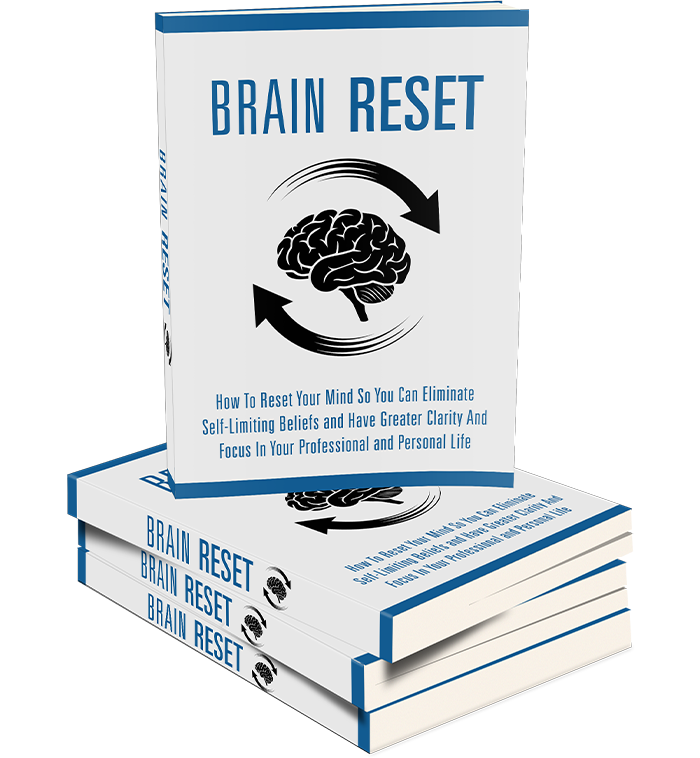Self-Hypnosis 101: The Dark Psychology of Reprogramming Your Mind for Happiness and Success

“Until you make the unconscious conscious, it will direct your life and you will call it fate.” – Carl Jung
What if the only thing standing between you and the life you want... is your own mind working against you?
You’ve heard the self-help clichés:
“Be more positive.”
“Believe in yourself.”
“Act like you’re lucky.”
But let’s be honest, those sound nice until real life slams into you like a freight train of self-doubt, stress, and deeply buried beliefs that whisper:
“You’re not good enough.”
“You don’t deserve success.”
“This won’t last.”
These aren’t just negative thoughts. They’re unconscious programs, scripts buried so deep in your psyche that you don’t even know they’re running. And unless you rewrite those scripts, you’ll continue to repeat the same patterns, chase the same illusions, and live the same unfulfilled life.
But here’s the truth no one told you:
You can hack your own brain. You can reprogram your unconscious. And you can do it without a therapist, a guru, or years of meditation.

Brain Reset
Discover How To Reset Your Brain So You Can Eliminate Self-Limiting Beliefs, Have Greater Clarity, Focus In Your Professional And Personal Life
🔍 Understanding the Psychological Battlefield: Conscious vs. Unconscious
To understand self-hypnosis, you first need to understand the battleground of your mind:
- The Conscious Mind is your voice of logic and willpower. It's the voice you hear when you read this sentence.
- The Unconscious Mind is the deeper reservoir of your core beliefs, learned habits, and emotional associations. You don’t hear it, but it influences 90% of your behavior.
Most of your life—your fears, your habits, your self-worth—is not dictated by conscious decision-making.
It’s automated.
Which means trying to “think positive” consciously is like trying to change the direction of a hurricane with a handheld fan.
That’s where self-hypnosis comes in.
🧠 What Is Self-Hypnosis, Really?
Forget the swinging pendulums and clucking like a chicken—self-hypnosis isn’t magic or mind control. It’s psychology, rooted in:
- Neuroscience: The brain creates and strengthens neural pathways based on repeated thoughts and behaviors.
- Cognitive Psychology: Repetition and visualization can bypass critical thinking and access the unconscious mind.
- Language Framing: The way you speak to yourself directly influences what you believe to be true.
Self-hypnosis uses relaxed awareness + embedded suggestions to sneak new beliefs past the conscious guard and plant them directly in the soil of your unconscious. Over time, these beliefs grow into automatic behaviors.
🎯 The Power of “Unconscious Cues”: Programming Without Resistance
One of the most powerful tools in self-hypnosis is the use of unconscious cues—subtle, repeated signals that shape your perception without triggering mental resistance.
Here’s how to use them:
✅ 1. Reframe with Language the Right Way
Bad:
“I will be confident.” (Your mind says, “No you won’t.”)
Better:
“You may start to notice how natural confidence begins to feel in social situations.”
- This type of phrasing, called embedded suggestion, is less confrontational and bypasses inner resistance.
- It’s modeled after Milton Erickson’s hypnotherapy technique: gentle, permissive language that slips under the radar.

✅ 2. Create a Trigger-Rich Environment
Don’t rely on memory. Surround yourself with passive programming:
- Sticky Notes: “You’re already becoming the version of you that you respect.”
- Phone Wallpaper: A phrase like “Aligned. Unstoppable. At ease.”
- Passwords: Use empowering words or goals in your password (e.g., “CalmFocus#2025”).
Your environment should echo your transformation, even when you're not consciously focused on it.
✅ 3. Use Hypnotic Priming in Your Morning Routine
Your first 30 minutes awake are golden. Your brain is still in theta state, ideal for suggestion.
Create a short self-hypnosis ritual:
- Close your eyes.
- Breathe deeply for 3–5 minutes.
- Whisper affirmations using embedded language:
- “You might enjoy how much easier focus comes to you today.”
- “There’s something natural about the way luck seems to follow you lately.”
This isn't forced belief—it's subtle planting of expectation.
✅ 4. Visualize with Emotion, Not Perfection
Don’t try to force vivid, perfect mental movies.
Instead, evoke emotion:
- Picture how it feels to succeed.
- Recall a memory where you felt proud or powerful.
- Anchor that feeling while repeating your cue phrases.
Emotion + repetition = unconscious reprogramming.
💥 Why This Works (and Why Most Self-Help Fails)
Most self-help fails because it tries to brute-force change through conscious willpower alone. But your unconscious is immune to logic—it only understands emotion, symbols, and repetition.
Self-hypnosis bypasses your inner skeptic.
It stops trying to shout over your inner critic and instead whispers truth beneath it, until that truth becomes automatic, effortless, and embodied.
⚠️ The Shadow Side: Use This Responsibly
Here’s the dark secret:
This method works whether your intentions are empowering or destructive. That’s why trauma, toxic relationships, and negative self-talk get embedded so deeply—they operate hypnotically.
So use this power wisely.
Don’t feed your unconscious more reasons to fear or shrink.
Feed it reasons to expand, to trust, to grow.
🔓 Rewriting the Script of Your Life
You are not your history.
You are not your automatic thoughts.
You are not even your beliefs—unless you choose to keep them.
Your unconscious is not your enemy. It’s your operating system. And like any system, it can be updated—intentionally.
So the next time you wonder why luck always seems to favor others...
Ask yourself this instead:
“What am I programming into my own mind every day—without realizing it?”
Because in the end, success isn’t just about effort.
It’s about alignment—between your unconscious identity and your conscious desire.
And when those two are in harmony?
You don’t chase transformation.
You become it.
Recommended Readings
- 5 Things Overthinkers Are Really Good At
- A Better Way to Think About a Good Life
- An Amazing Year or 365 Days of Disappointments?
- Creativity Isn’t a Luxury - New!
- Creativity Starts in the Chaos, Not the Calm
- Do You Live in an "I" World or a "We" World?
- Forgiving can change your life in powerful ways
- Fresh Starts: Exploring the Psychology of New Year Motivation
- Happiness: Why Having a Purpose Matters More Than Money
- How Positive Psychology Can Help You Stay Strong
- How Psychology Can Help Improve Parks for Women
- How to Avoid the Hidden Traps of Success
- How to Grow and Keep Empathy Strong



